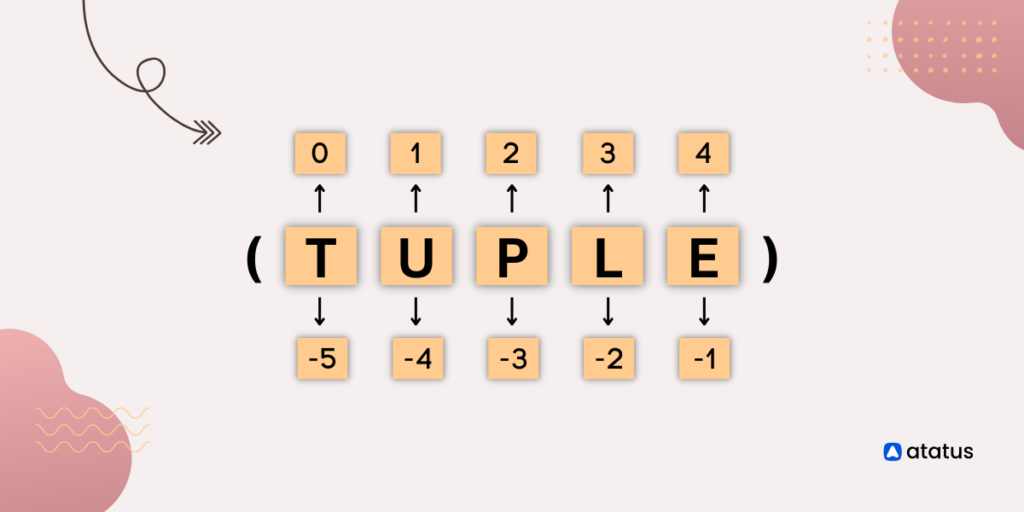Mastering Tuple Manipulation in Python: A Comprehensive Guide for Efficient Data Handling

Introduction: Tuples are versatile data structures in Python used for storing collections of items, similar to lists, but with immutable properties. Tuples are ideal for representing fixed-size sequences of heterogeneous elements and are widely used in various applications, including data processing, function return values, and dictionary keys. In this comprehensive guide, we will explore the principles, techniques, and best practices for working with tuples in Python, empowering developers to leverage the full potential of this powerful data structure.
- Understanding Tuples in Python: Tuples are ordered collections of elements enclosed in parentheses
(), where each element is separated by a comma. Unlike lists, tuples are immutable, meaning their elements cannot be modified, added, or removed after creation. Tuples support indexing, slicing, iteration, and concatenation operations, making them versatile and efficient for storing and manipulating data. Tuples are commonly used to represent fixed-size records, function arguments, and multiple return values. - Creating Tuples: Tuples can be created using parentheses
()or thetuple()constructor function, with or without enclosing commas. Empty tuples can be created using empty parentheses(). Single-element tuples can be created by placing a comma after the single element, ensuring it is interpreted as a tuple and not a parenthesized expression. Tuples can contain elements of different data types, including integers, floats, strings, booleans, and even other tuples. - Accessing Tuple Elements: Tuple elements can be accessed using zero-based indexing, similar to lists. Individual elements can be accessed using square brackets
[]and the element’s index. Negative indices can be used to access elements from the end of the tuple. Slicing can be used to extract sub-tuples from the original tuple, using the syntaxtuple[start:end:step]. Tuple unpacking allows assigning individual elements of a tuple to multiple variables in a single statement. - Immutable Nature of Tuples: One of the key characteristics of tuples is their immutability, meaning once created, tuple elements cannot be modified, added, or removed. Attempts to modify tuple elements or assign new values to tuple indices result in
TypeErrorexceptions. However, tuples can contain mutable objects such as lists, dictionaries, or sets, and modifying these objects will reflect changes in the tuple. Immutability ensures data integrity and facilitates safe sharing and passing of data between functions and modules. - Tuple Operations and Methods: Tuples support various operations and methods for efficient data manipulation. Common tuple operations include concatenation using the
+operator, repetition using the*operator, membership testing using theinandnot inoperators, and length determination using thelen()function. Tuple methods such ascount()andindex()allow counting occurrences of an element and finding the index of a specified value, respectively. - Tuple Packing and Unpacking: Tuple packing is the process of combining multiple values into a single tuple, while tuple unpacking is the process of extracting individual values from a tuple into separate variables. Tuple packing occurs implicitly when multiple comma-separated values are enclosed in parentheses, while tuple unpacking occurs explicitly when a tuple is assigned to multiple variables separated by commas. Tuple packing and unpacking are commonly used in function return values, multiple assignments, and iterable unpacking.
- Iterating Over Tuples: Tuples support iteration using loops, comprehensions, and other iterable operations. Iterating over a tuple allows accessing each element sequentially and performing operations or transformations as needed. Tuples can be iterated using
forloops,whileloops, list comprehensions, generator expressions, and built-in functions such asmap()andfilter(). Tuple unpacking can be combined with iteration to access individual elements within nested tuples. - Tuple as Dictionary Keys: Tuples are hashable and can be used as keys in dictionaries, making them useful for creating multi-dimensional dictionaries or associating metadata with dictionary entries. Dictionary keys must be immutable, and tuples provide a convenient way to represent compound keys composed of multiple values. By using tuples as dictionary keys, developers can efficiently store and retrieve data based on complex criteria or hierarchical structures.
- Immutable vs. Mutable Data Structures: Understanding the differences between immutable and mutable data structures is essential for choosing the right data structure for a given use case. While tuples are immutable and provide data integrity and safety, lists are mutable and allow dynamic modifications. Immutable data structures are suitable for representing constant or fixed-size data, while mutable data structures are suitable for dynamic data manipulation and in-place updates.
- Best Practices and Considerations: To effectively work with tuples in Python, developers should follow best practices and considerations such as using tuples for fixed-size collections of homogeneous or heterogeneous elements, leveraging tuple packing and unpacking for concise and readable code, and preferring tuple comprehension over list comprehension for performance-critical operations. Developers should also consider the trade-offs between immutability and mutability when choosing between tuples and lists for data storage and manipulation.
Conclusion: Tuples are versatile and efficient data structures in Python, offering immutable collections of elements for various use cases in data processing, function return values, and dictionary keys. By mastering the principles, techniques, and best practices covered in this guide, developers can leverage the full potential of tuples to create robust, efficient, and maintainable Python code. Whether representing fixed-size records, passing multiple return values, or creating compound dictionary keys, tuples provide a powerful and flexible solution for handling data in Python applications.




